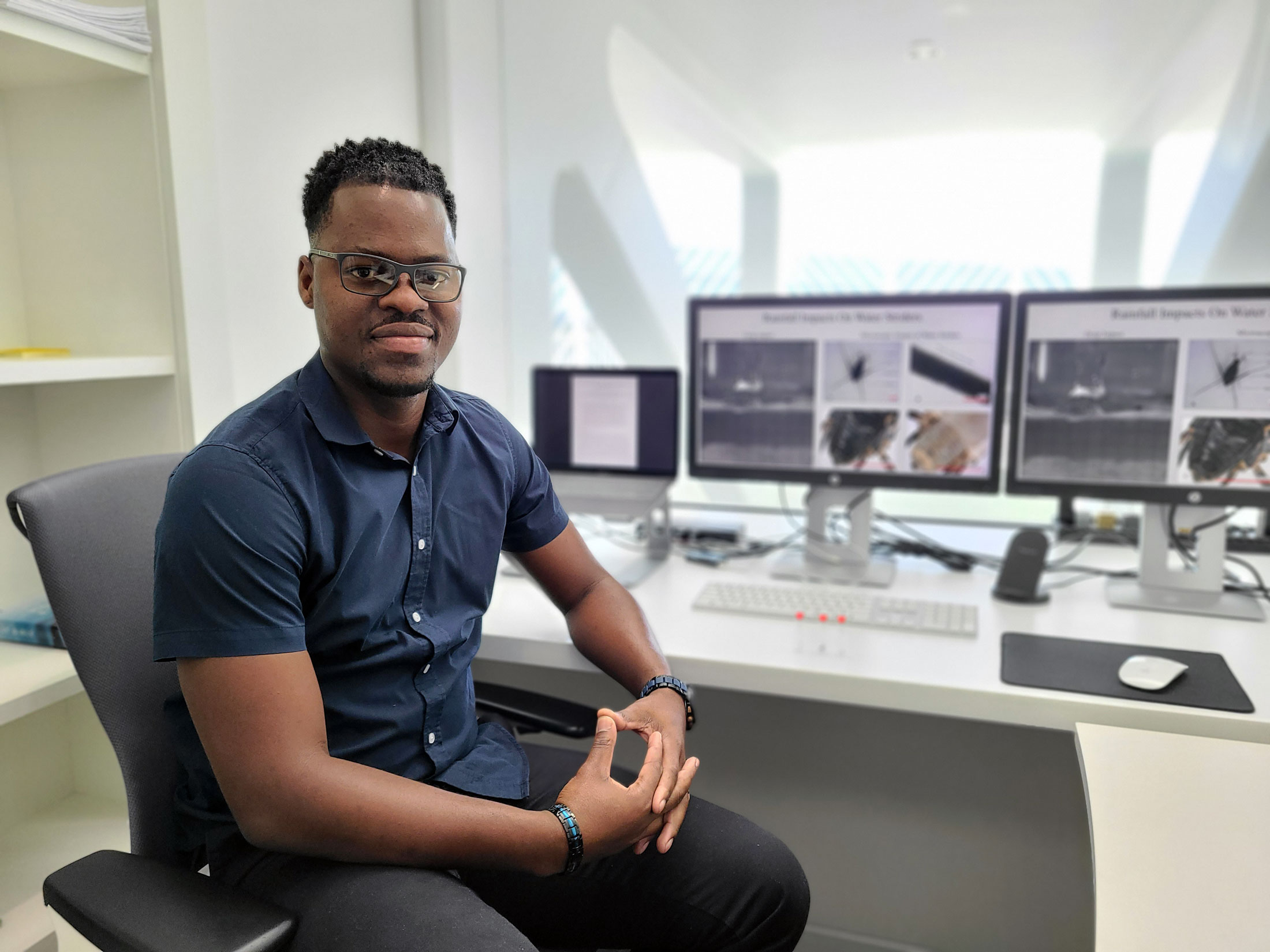
Dr. Daren Watson, assistant professor of mechanical engineering at Florida Polytechnic University, is researching the survival mechanisms of water striders during adverse environmental conditions. His work could have future implications on the application of robotics in aqueous environments.
The natural adaptations that enable tiny, water-walking insects to withstand the assault of torrential rainstorms could one day make the leap to advances in biomimetic robots thanks to research by a Florida Polytechnic University professor.
Dr. Daren Watson, assistant professor of mechanical engineering, is studying the ways water striders can withstand raindrops. Water striders are tiny insects that live on ponds and marshes, supported by surface tension that allows them to walk on water. His research aims at helping scientists replicate the unique abilities of these insects via advanced biomimetic robots in the future.
“Understanding the survival mechanisms that a small, surface-dwelling insect possess to endure periodic disturbances within aqueous environments as a result of torrential downpour is good for us in terms of creating small robotic structures that require similar resilience when interacting with fluid bodies,” said Watson, who is working on the research in collaboration with Dr. Andrew Dickerson of the University of Tennessee, Knoxville.
Watson’s research involves simulating rainfall in a laboratory and observing how water striders react to the impact of a single drop of water.
“If you want a robotic structure to maintain free surface dwelling, or to be robust to rainfall, characteristics akin to those of a water strider will be helpful,” Watson said.
One of the most notable observations of the research so far is the water strider’s super-hydrophobic nature, keeping it dry despite a deluge of raindrops. Watson said he has observed densely-packed micro and macro hairs along the water strider’s exoskeleton that maintain dryness for varying levels of exposure to water.
“If you place a drop of water on it, you find it sits on the insect without wetting it or seeping in between hairs, and this mechanism leads to the formation of an air bubble around the insect when submerged due to a raindrop,” he said. “While the presence of hairs leading to hydrophobicity is well understood in literature, our experiment tests the limit of this hydrophobicity.”
Additionally, the creature’s low weight allows it to move in conjunction with the splash produced by a raindrop – briefly dipping below the surface with the water crater caused by impact and then being propelling upward above the surface with a small jet of water. If the water strider remains beneath the fluid after being hit by a raindrop, it survives for several minutes, and uses a series of power strokes to swim and resurface.
“We will now have insight into how other insects of similar scales survive on top of fluids,” Watson said. “It is our hope that the results will allow researchers to juxtapose similar survival mechanisms for many other semi-aquatic creatures.”
Watson will present details of his research at the American Physical Society’s 74th Annual Meeting of its Division of Fluid Dynamics in Phoenix, Arizona, on Nov. 21.
Contact:
Lydia Guzmán
Director of Communications
863-874-8557